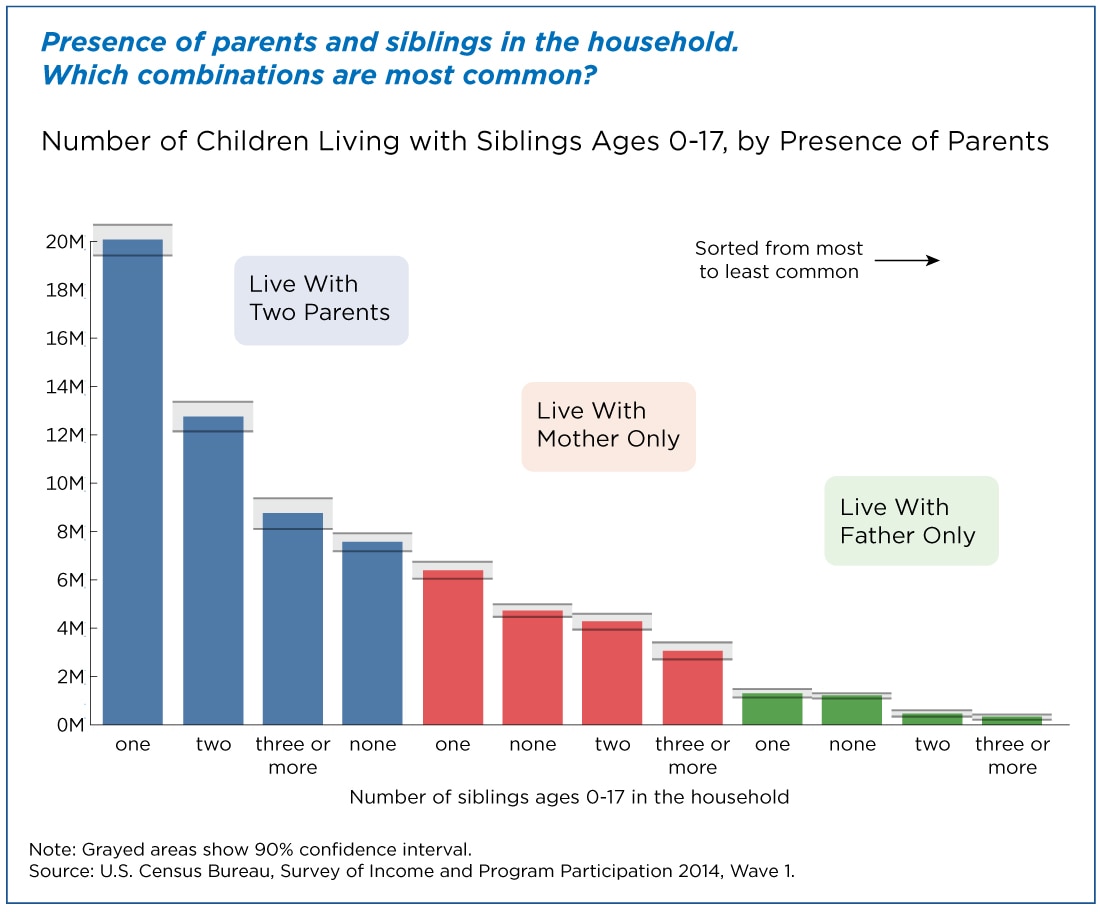National Sibling Day is an annual celebration that takes place on April 10.
According to the 2020 U.S. Census data, 80% of all children in America grow up with a sibling. The U.S. holiday was conceived by Claudia Evart to honor the memory of her brother and sister. She created the non-profit organization Siblings Day Foundation.
Carolyn Maloney, the former U.S. Representative for New York’s 14th congressional district, officially saluted the holiday and introduced it into the official Congressional Record of the United States Congress on April 10, 1997. In Europe, the holiday is celebrated as Brothers and Sisters Day annually on May 31.
In the United States, in 2020, 78% of parents living with children were married, compared to 77% in 2010. Adults living with an unmarried, cohabiting partner made up 7% of parents with coresident children under 18 in both 2010 and 2020. Finally, parents living without a partner accounted for 16% of parents in 2010 and 15% of parents in 2020.
From the Census Working Paper: Family Complexity and Child Well-Being, October 2019, SEHSD-WP2019-34, Brian Knop: “Family complexity is associated with child well-being, even when controlling for race/origin and poverty. Complex sibling arrangements are not uncommon in families today. However, children living with fewer siblings, only biological siblings, or with two parents had higher extracurricular involvement and more positive school experiences. Controlling for race and poverty narrowed this gap, but did not erase this relationship.”
Notes:
- FAMILY COMPLEXITY MEASURES: Number of siblings, Type of siblings (Biological, Step, Half, Adopted), and Parents in the home (Two parents, Mother only, Father only, Guardian).
- CHILD WELL-BEING MEASURES: Extracurricular Activities (Plays a sport, Takes Lessons, In a Club) and School Experiences (In a gifted class, Ever expelled from school, Ever held back a grade).
Key Stats
Source: Current Population Survey (CPS), 2020 Annual Social and Economic Supplement.
C3. Living Arrangements of Children Under 18 Years and Marital Status of Parents, by Age, Sex, Race, and Hispanic Origin and Selected Characteristics of the Child for All Children: 2020, see PRESENCE OF SIBLINGS

More Stats
From the Library:America Counts story: More Children Live With Half Siblings Than Previously Thought (January 2020), see Figure 1 below
Census Working Papers > Family Complexity and Child Well-Being (October 2019)
Poster: Family Complexity and Children Well-Being (October 2019)
Figure 1: Presence of parents and siblings in the household. Which combinations are most common?

Outside Links
Adopted.com: Trying to find your siblings?
American Academy of Pediatrics, HealthyChildren.org: Types of Sibling Relationships
CNN Health: It’s National Siblings Day! Here’s what you need to know (April 10, 2019)
Sibling Leadership Network: National Siblings Day 2021 Toolkit
Author: Mario Lotmore









